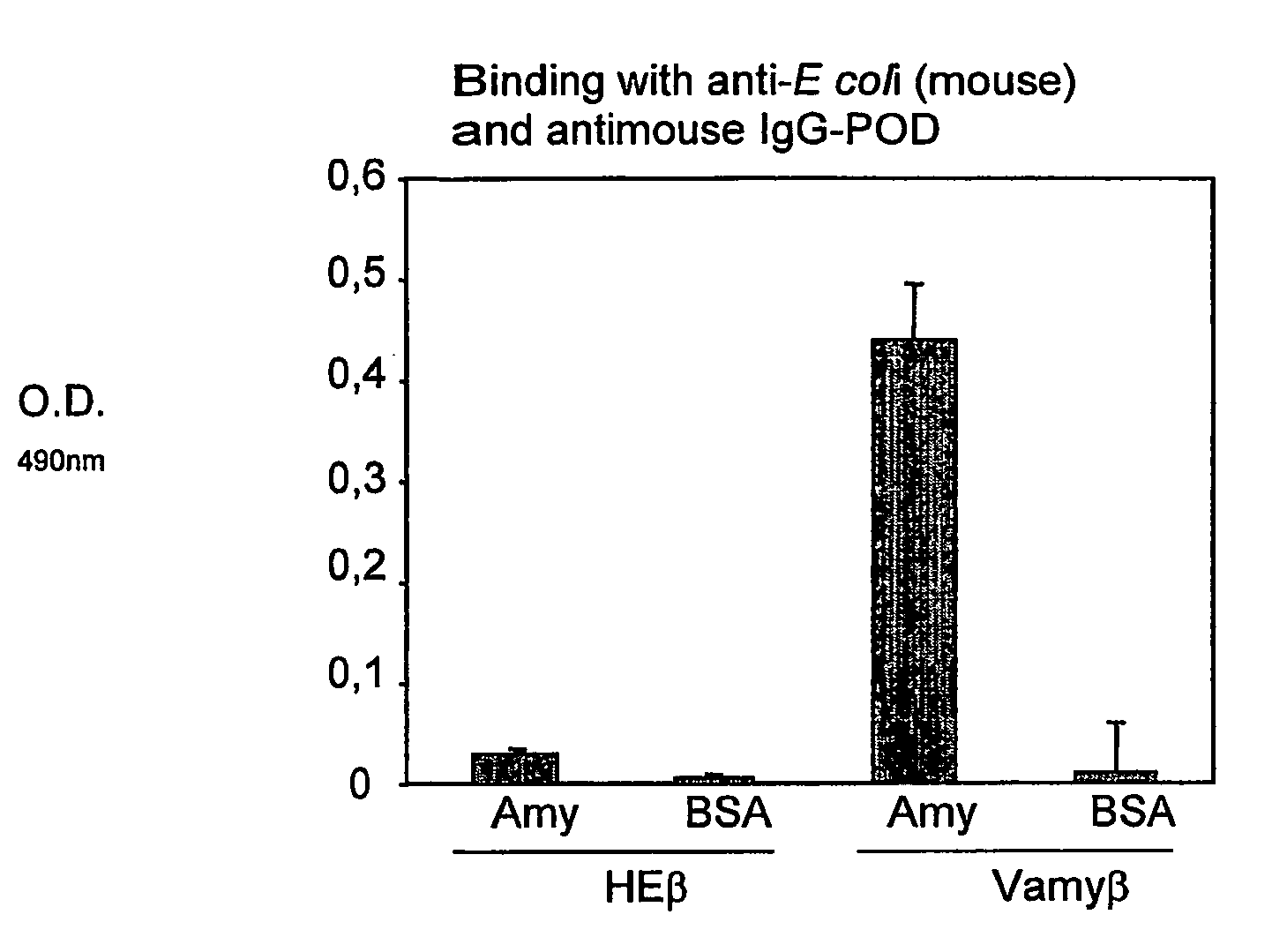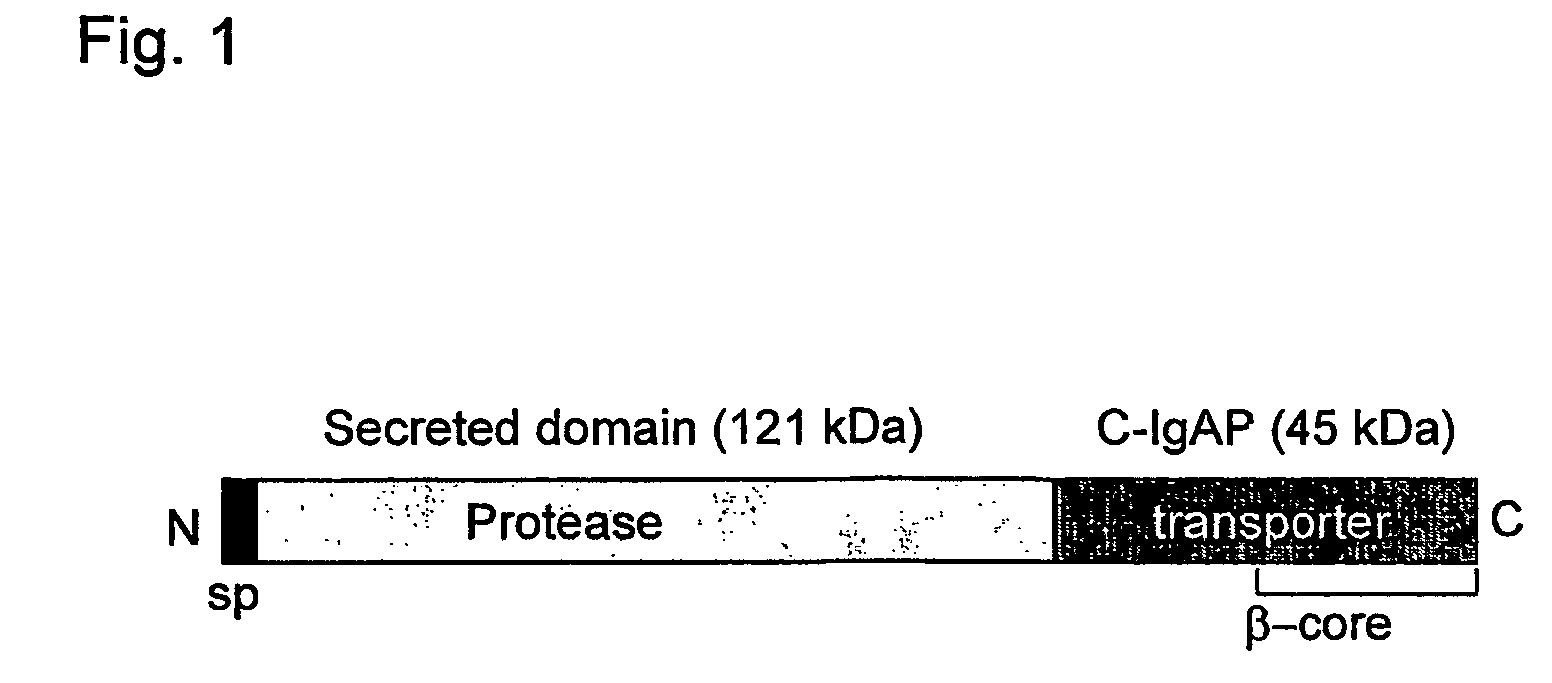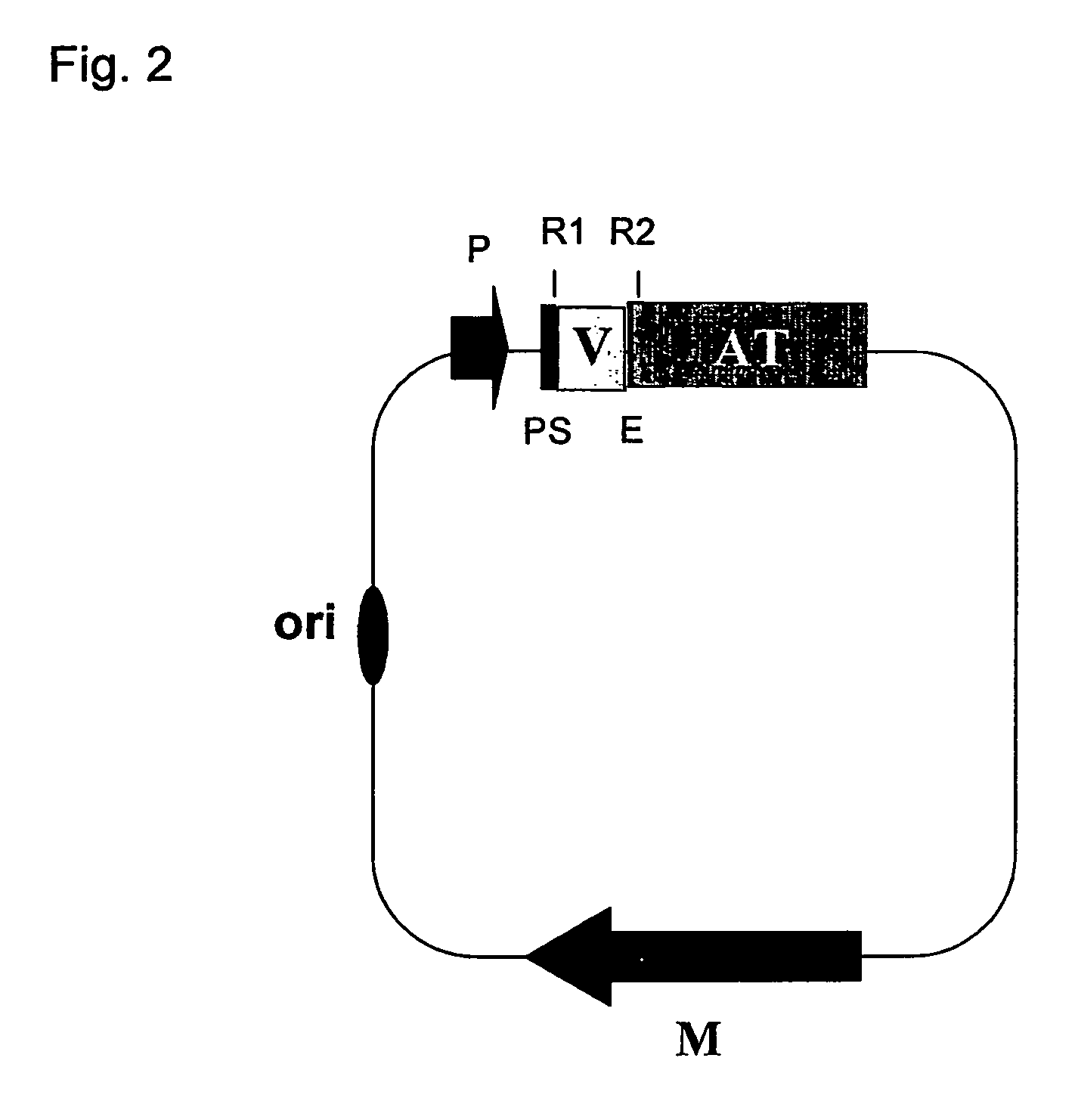Generation of specific adhesion in gram-negative bacteria by means of anchoring immunoglobulin single domains on their surface with autotransporters
a technology of specific adhesion and immunoglobulin, which is applied in the direction of immunoglobulins against animals/humans, peptides, enzymology, etc., can solve the problems of low efficiency of translocation and proteolysis of fusion, and achieve the effect of reducing problems and high efficiency
- Summary
- Abstract
- Description
- Claims
- Application Information
AI Technical Summary
Benefits of technology
Problems solved by technology
Method used
Image
Examples
example 1
[0075]Construction of Hybrid Proteins Made Up of the VHH Domain Fused to C-IgAP
[0076]Hybrid proteins anchored to the external surface of the OM of E. coli comprising 1, 2 or 3 Vamy domains fused to the C-IgAp domain, hereinafter referred to as Vamyβ, Vamy2β and Vamy3β respectively (FIGS. 3A and 7A), have been obtained. The signal peptide of PelB drives the secretion of said hybrid proteins through the IM to the periplasmic space.
1.1 Construction of the C-IgAP and Vamy Hybrid Protein (Vamyβ)
[0077]An approximately 0.4 kb DNA fragment encoding a VHH domain recognizing α-amylase (Vamy) was amplified by PCR using the phagemid A100R3A2 (Dyax Co.) as a template and the oligonucleotides VHAA1 (SEQ ID NO: 3) and GEN III-Rev (SEQ ID NO: 4) as primers. The amplified DNA product was subsequently digested with SfiI and NotI and cloned into an approximately 5.2 kb fragment derived from the digestion of pF11β (CmR) with SfiI-NotI (Veiga et al., Mol Microbiol 1999, 33 (6): 1232-43), under the contr...
example 2
[0080]Construction of pVLMB10β: VLMB10 Domain Fused to C-rgAP
[0081]A hybrid protein anchored to the external surface of the OM of E. coli comprising the VLMB10 domain fused to the C-IgAp domain, hereinafter referred to as VLMB10β (FIG. 3B), has been obtained. The signal peptide of PelB drives the secretion of said hybrid protein through the IM to the periplasmic space.
[0082]PCR was carried out with oligos VL1 (SEQ ID NO: 9) and VL2 (SEQ ID NO: 10) and using the pCES1-VLMB10 clone (van den Beucken et al., J. Mol. Biol. (2001) 310, 591-601) as template. The amplified 0.47 kb DNA fragment, containing the VL domain, was digested with XbaI and NotI, and was cloned into plasmid pVamyβ, digested with the same enzymes, replacing the XbaI-NotI fragment which contains the Vamy domain in said plasmid. The constructed clone pVLMB10β (SEQ ID NO: 2), which expresses the hybrid protein VLMB10β under the control of promoter pLac, was checked by means of DNA sequencing.
example 3
Expression of pVVamyβ in E. coli UT5600 Cells
[0083]The expression of the Vamyβ hybrid protein in E. coli UT5600 cells was analyzed in Western-blots using the anti-E-tag mAb (FIG. 4). Vamyβ was expressed in a stable manner as a 66 kDa protein, corresponding to the expected size for the fusion (FIG. 4A, lane 1). However, the expression of FvHβ (Veiga et al., Mol. Microbiol. 1999, 33 (6): 1232-1243), which gave rise not only to the complete 80 kDa protein, but rather to different bands of smaller sizes corresponding to the proteolytic degradation of the hybrid protein (FIG. 4A, lane 2). Transformation of E. coli cells was carried out by conventional techniques (Ausubel et al., 1994. Current Protocols in Molecular Biology. John Wiley & Sons, New York; Sambrook et al., 1989. Molecular cloning. A laboratory manual. Cold Spring Harbor Laboratory Press, New York).
PUM
| Property | Measurement | Unit |
|---|---|---|
| structural flexibility | aaaaa | aaaaa |
| nucleic acid sequence | aaaaa | aaaaa |
| adhesion | aaaaa | aaaaa |
Abstract
Description
Claims
Application Information
 Login to View More
Login to View More - R&D
- Intellectual Property
- Life Sciences
- Materials
- Tech Scout
- Unparalleled Data Quality
- Higher Quality Content
- 60% Fewer Hallucinations
Browse by: Latest US Patents, China's latest patents, Technical Efficacy Thesaurus, Application Domain, Technology Topic, Popular Technical Reports.
© 2025 PatSnap. All rights reserved.Legal|Privacy policy|Modern Slavery Act Transparency Statement|Sitemap|About US| Contact US: help@patsnap.com



